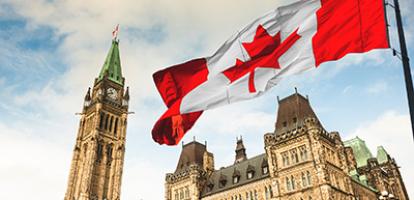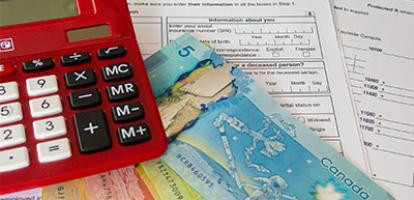Published in the Financial Post.
It is rare for the Bank of Canada to change its policy interest rate by more than 25 basis points, either up or down. Big changes have been reserved for crises, like the beginning of the pandemic, when the Bank made three 50-basis-point cuts in a single month, or when inflation is running out of control, as it was in late 2022 when the bank raised its rate by 50 basis points. Last week’s news that inflation has returned to the bank’s two percent target does not signal a crisis but in our view it does mean a larger-than-normal cut is called for. Without an aggressive cut, the economy could tip into a needless recession.
It’s been a long road since inflation first rose above its official two per cent target in March 2021. It peaked at 8.1 percent in June 2022, before interest rate hikes started to work their way through the economy. Last month, two years and two months later, the CPI finally came in at its two percent target — for the first time since February 2021.
One of the key concepts in central banking is the “neutral interest rate,” a term used to describe a situation where the economy is operating at its potential and inflation is sustainably at its target. The bank estimates this neutral rate to be in a range from 2.25 to 3.25 percent. Today the policy interest rate, the overnight rate, is 4.25 percent — 100 to 200 basis points above the neutral rate. That means monetary policy is still tight. If the policy rate remains above neutral, inflation will likely continue to fall.
The questions of the hour are how much to cut and how quickly? There are good reasons not to lower the policy rate by the full 100 basis points at the next meeting. First, the range for the neutral rate is uncertain. Also, the bank does not want to re-ignite the inflation it has worked so hard to defeat. Finally, there are still pockets of stubborn inflation about — shelter in particular and services more broadly. Despite all that, the usual 25-basis-point increment may not be enough, as the U.S. Fed indicated with its 50-point cut last week.
Although the nominal policy rate — currently 4.25 percent — gets all the headlines, it is the real policy rate that matters. That’s the nominal rate adjusted for inflation. Just before this latest cut, when the policy rate was still 4.50 percent, headline inflation was 2.5 per cent, which means the real policy rate was two per cent. But now, with a policy rate of 4.25 percent and inflation of two per cent, the real policy rate is 2.25 percent — actually a little higher. Despite the bank’s most recent cut, monetary policy is actually a little tighter. With the economy slowing and inflation declining, tighter monetary policy isn’t appropriate.
There is one more CPI release before the bank’s next policy meeting. If inflation remains at two per cent, a 50-basis-point cut would at least move the real rate down to 1.75 percent.
One possible concern is that in adjusting the policy rate for inflation we are comparing the current policy rate with current inflation when monetary policy needs to be forward-looking. That’s true, but if instead we use the bank’s own inflation expectations data, we get the same story. For example, in the third quarter of 2023, 52 percent of respondents to the bank’s regular survey expected inflation six months out to be greater than three per cent: the latest numbers (from the second quarter of 2024) have that down to 24 per cent. Using inflation expectations to calculate the real policy rate would continue to show tighter monetary policy.
Inflation falling below two per cent may not sound so bad. But if it’s happening because overall demand is falling short of the economy’s capacity to produce goods and services, that’s not a good thing. With unemployment rising and GDP per person falling in seven of the past eight quarters (including five straight), we believe that’s exactly what’s happening. Governor Tiff Macklem’s public remarks after the last monetary policy announcement suggest the bank does, too.
Forecasting where the economy will be six to eight quarters out and setting monetary policy accordingly is not easy. The bank can take comfort that inflation is returning to target. A cut in interest rates is therefore coming. The increase in the real policy rate since the bank’s past cut suggests it should be big. To us, 50 basis points sounds right.
Jeremy Kronick is associate vice-president and director of the Centre on Financial and Monetary Policy at the C.D. Howe Institute, where Steve Ambler, professor of economics at Université du Québec à Montréal, is the David Dodge Chair in Monetary Policy.





